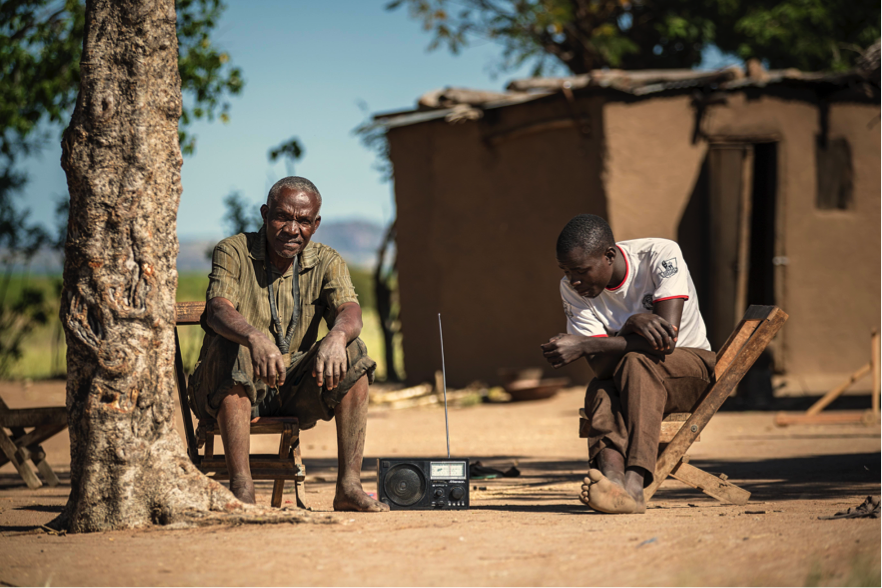As parents, we all want to raise children who are charitable. We want our children to understand the value of giving and experience the sense of purpose and joy that giving brings. But if we want our kids to grow up to be philanthropists, we must plant the seed of giving early. A 2013 study conducted by the Lilly Family School of Philanthropy at Indiana University found that “[p]arents play an important role in preparing their children to become charitable adults.” Even more significantly, the study concluded that “[p]arents who talk to their children about charitable giving significantly increase the likelihood that those children will give to charity.” In other words, we can teach our children to be charitable, but we must talk to our children about being charitable.
What are the best ways to teach children about the value of philanthropy?
Be a Role Model
One simple way to introduce your children to philanthropy is to model charitable giving yourself. We all know that children frequently learn behaviors by observing their parents. Charitable giving appears to be no exception. A 2018 study (also conducted by the Lilly Family School of Philanthropy) found that “[p]arental giving is linked with an increase in children’s likelihood of giving.” Do your children know about all the charitable work you do? If not, consider telling your children about some or all of the charities you support, how you support them, and why you support them. People often downplay the amount of charitable work they do out of humility, but it’s important to let our children see all of the good work we do, be it volunteering or donating.
Talk Directly About Giving
While modeling charitable giving can positively impact our children’s behavior, research suggests that modeling charitable giving alone may not be sufficient to foster a lifelong habit of giving. The 2013 study cited above puts it starkly: “Parents’ giving to charity is not enough to teach children to be charitable.” Instead, it appears that talking to children about charity has a greater impact on children’s giving than simply modeling charitable behavior. The same 2013 study concludes that “[f]ocused, intentional teaching by talking to children about charity is what works.” So, if we want to foster a lifelong habit of giving in our children, we have to talk with our kids about charity explicitly and routinely and, if possible, involve our children in our charitable activities.
Check Out the Kid-Friendly Resources from The Life You Can Save
Not sure how to begin talking about charity with your children? The Life You Can Save has many helpful resources that you can use to start a conversation with your children about the value and importance of effective giving.
Younger children may enjoy our new video, “I Want To Do Good!,” which uses songwriting, puppeteering, and animation to teach the importance and joy of giving:
Older children might enjoy exploring resources such as our Calculate Your Impact page, which helps visualize how donations translate to real-world action. Amy Lawrence, a parent and The Life You Can Save donor, recently wrote to us to say that she found our impact calculator “particularly motivating for [her] family” and that the resources provided by The Life You Can Save helped her family “connect…by reading about the organizations and their work, the places they operate, the people they serve, and (as a family of faith) praying for the organizations and beneficiaries as we donate.”
Use Simple Models to Explain Your Charitable Giving
A pie chart is a simple, effective visual way to show your kids how your total giving breaks down across different organizations. You might start with a “pie” of $100, let each dollar represent a percentage point, and distribute the money accordingly across the different nonprofits you support. As you divide up your pie, you might tell your kids a little about each organization you support, how much you give it, and why you give that amount/percentage. You might distinguish among different types of organizations you support: for instance, organizations to which you (or your spouse, family, or friends) are personally connected, organizations that support your community, or organizations that have a national or global impact. Where age-appropriate, you might even talk about pressing issues in the world and how they relate to your giving. As part of the conversation, you might ask your children for their thoughts and opinions about the way you divide your total giving. What do they think is especially important? Or missing? Would they divide their pie in a different way?
Involve Your Children in Your Charitable Giving
Another idea is to set aside a portion of your own charitable giving in a “pot” that your children can help manage. You might let your children use the pot to donate to a nonprofit of their choice or to a nonprofit from a list of suggestions you provide. Older kids and teens can be invited to do some online research to find new charities that interest them. Whatever your approach, it is meaningful to have your children watch and even help with the actual act of donating, whether sitting with you as you write a check, applying a stamp and sealing an envelope, filling out a form online, or clicking “send.”
Incorporate Charitable Giving In Your Children’s Allowance
If you want to foster even more independence in your child’s philanthropy, consider offering your child an allowance and designating a small portion of that allowance for charitable giving. One approach would be to give your child a weekly dollar amount equal to their age. The child would then get to keep half of the weekly allowance for spending, and the other half would be divided between savings and charity. A 12-year-old child, for example, would receive $6 in spending money per week, $3 for savings, and $3 for charity. After a year, the child would save a total of $155, which could be donated at the end of the year to his or her preferred nonprofit. You might even help your child set up a monthly recurring gift, which nonprofits often appreciate!
Make Charitable Giving a Family Activity
All of the prior suggestions can help establish charitable giving as a fun family activity at home. But volunteering locally also makes for a fulfilling charitable experience with the family. Local food banks often host events where families can donate and help distribute food. These events fill up quickly, so be sure to check early. Schools and clubs often host food or toy drives around the holidays. Warm coat collections are also popular in the fall and winter. All of these activities provide a chance to talk to your children about charity: how does it work, who are the recipients, why do people need assistance, and how can our family help?
Inspiring Acts of Giving from Children around the World
At The Life You Can Save, we are fortunate to encounter inspiring stories about young people participating in charitable giving every day. We’d like to share a few of those stories with you and your family.
An 11-year-old Australian uses her creativity to help the global poor
Eleven-year-old Jade, in Northern Territory, Australia, recently undertook a heartwarming project to raise money for one of our recommended charities.
Read the full story.
Young Australian Uses School Project to Support One Acre Fund
Inspired by his older sister Jade’s example (mentioned above), nine-year-old Nate raised donations to help “pay for seeds and farm equipment so that people in poverty can grow crops” and “break the cycle of poverty.”
Read the full story.
As you send your kids off to school, think about Zusha!
Kate Tapping handed over her charity decision to her thirteen-year-old daughter, who researched and suggested Zusha! for her donation.
Read the full story.
The Pale Blue Dot
Kate Tapping’s family started a blog to chronicle their monthly giving.
Read the full story.
Putting Effective Giving Into Trick-or-Treat
For Halloween, Rabbi Levin handed out an envelope containing a dollar bill and a note introducing The Life You Can Save to each family that came to his door.
Read the full story.
Walking the Walk of Effective Giving and Christianity
Jason Dykstra’s maturing faith and understanding of altruism inspired his interest in The Life You Can Save and effective giving.
Read the full story.
The Valentine’s Day Gift That Saves Lives
Gleb Tsipursky’s wife suggested an experiment: for Valentine’s Day, they give to charity in the name of the other person.
Read the full story.



